Mangroves are amazing trees and shrubs that grow where the land meets the sea. They can live in salty water, survive strong tides, and stay steady even in soft, muddy ground. Found in tropical and subtropical coasts around the world, mangrove forests are full of life — from fish, crabs, and birds to rare animals — and they help protect coastal towns from storms.
Many mangrove trees also grow interesting fruits. Some are sweet and good to eat, others are important for wildlife, and a few have shapes and features you won’t see anywhere else.
Here are 9 popular mangrove fruits and what makes each of them special.
1. Mangrove Apple (Sonneratia caseolaris)
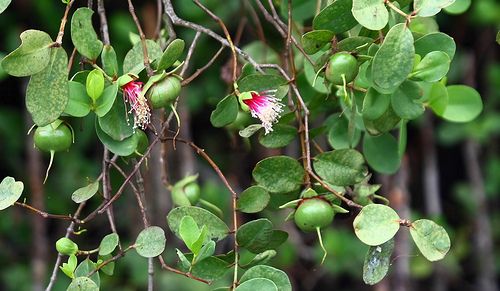
Mangrove apples are round fruits with smooth green skin and firm, cream-green flesh. They grow on trees along coastal mudflats in tropical Indo-West Pacific regions, helping prevent soil erosion. Known as Buah Pedada in Malaysia and Indonesia, they have a sour, tangy taste with faint berry and cheese-like notes. Inside are many small seeds. People eat them raw with salt, sugar, or coconut, or cook them in curries, stews, and chutneys. In Southeast Asia, they’re also dipped in shrimp paste, added to salads, or made into juices, jams, and vinegar. These versatile fruits are valued for both flavor and refreshment.
2. Nipa Palm Fruit (Nypa fruticans)
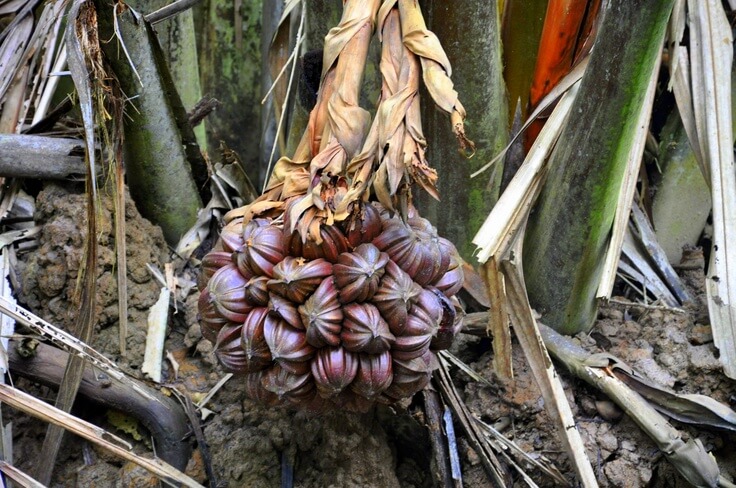
The nipa palm (Nypa fruticans), also called mangrove palm, grows along tropical coasts and river estuaries in the Indian and Pacific Oceans. It is the only palm adapted to mangrove habitats. Its large fruit bunches, about 40 cm wide, contain many hard-shelled fruits, each 10–15 cm long, with a pointed spike on top. When ripe, they turn brownish-black and float in water, helping spread their seeds. The flesh inside is soft, sweet, and enjoyed fresh. Harvesting is challenging — locals travel by boat, wade through deep mud, and cut down the heavy, spiky clusters.
3. Cannonball Mangrove Fruit (Xylocarpus granatum)
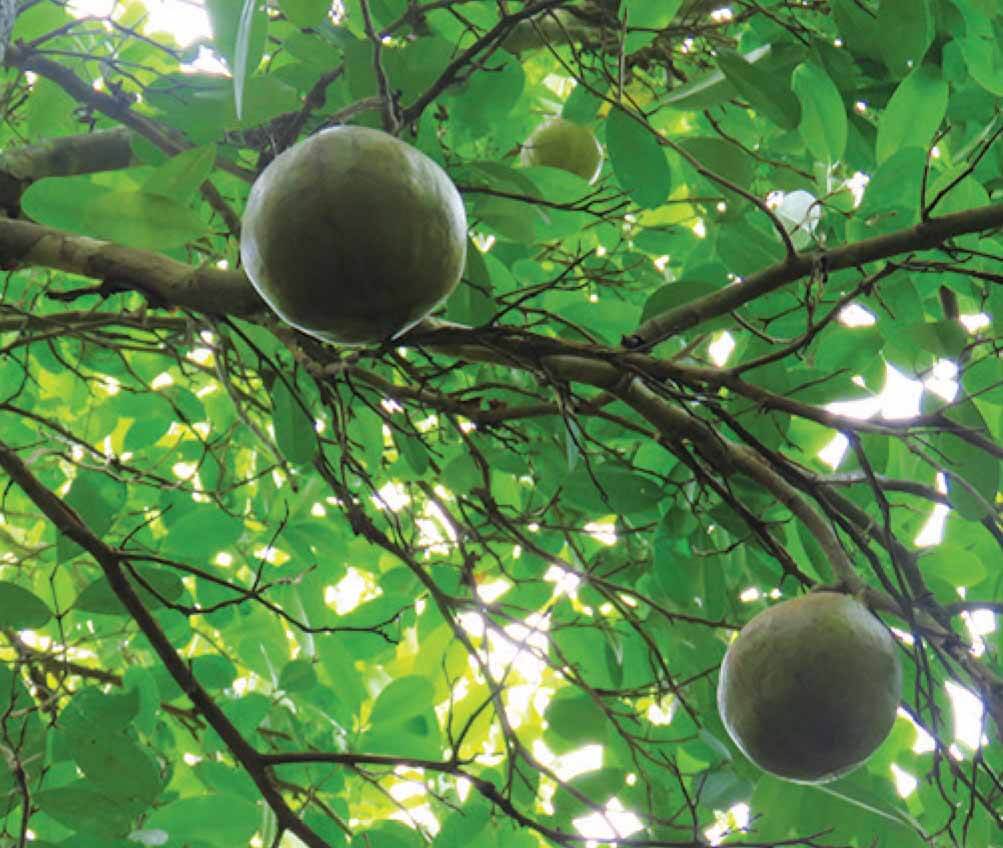
The cannonball mangrove (Xylocarpus granatum), also called puzzlenut or cedar mangrove, grows in tropical coastal areas and is named for its large, round fruits. These fruits, 10–25 cm wide and weighing up to 3 kg, turn golden-brown when ripe and contain 8–18 corky seeds packed tightly like a puzzle. When mature, the fruit splits or falls, shattering to release seeds that float and may sprout at sea. The perfectly fitted seeds inspired the name “puzzlenut.” Found on beaches in places like North Queensland, the bark, fruits, and seeds have long been used in traditional medicine. Only one fruit usually grows per branch.
4. Sea Mango (Cerbera manghas)
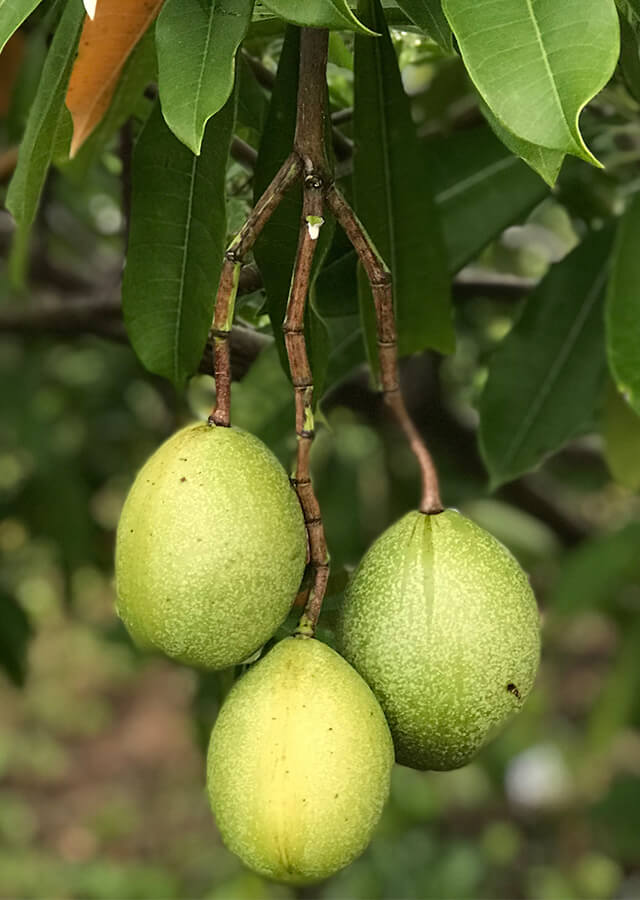
The sea mango (Cerbera manghas) is a small coastal tree that grows in mangrove areas across Africa, Asia, Australasia, and Pacific islands. Reaching up to 12 metres tall, it produces shiny green leaves and smooth, mango-like fruits. These fruits are beautiful but extremely poisonous due to a toxin called cerberin. In the past, they were used in traditional medicine for heart and skin problems, and even as fish poison. In Madagascar’s history, the seeds played a role in deadly “tangena” trials. Today, the sea mango is valued as part of the mangrove ecosystem, but its fruit should never be eaten.
5. Red Mangrove Propagule (Rhizophora mangle)

The red mangrove (Rhizophora mangle) grows along tropical coasts and estuaries in places like the Caribbean, Central America, and West Africa. In summer and autumn, it produces small, yellow, sweet-scented flowers that attract pollinators. After pollination, the seed begins to grow while still attached to the parent tree, forming a long, green-and-brown, cigar-shaped pod called a propagule. These pods can reach 20–30 cm and are ready to grow the moment they find the right spot. When they drop, they float on water for weeks before rooting in soft mud or sand. Not edible, but the propagules or seed pods act as clever survival tool for the plant.
6. Black Mangrove (Avicennia germinans)
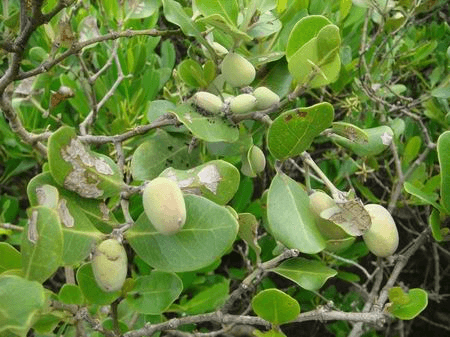
The black mangrove (Avicennia germinans) grows along tropical and subtropical coasts in the Americas and West Africa, thriving on sandy or muddy shores. In spring and summer, it produces clusters of small white flowers, followed by green, teardrop-shaped fruits. Inside each fruit is a seed that often begins to sprout while still on the tree — a process called vivipary. When ripe, the fruits drop, float in seawater, and grow once they reach a suitable shoreline. The seeds are flattened, bean-like, and not edible. Traditionally, the tree’s tannin-rich parts have been used as an astringent to help stop bleeding and diarrhea.
7. Lindur Fruit (Kewaka)
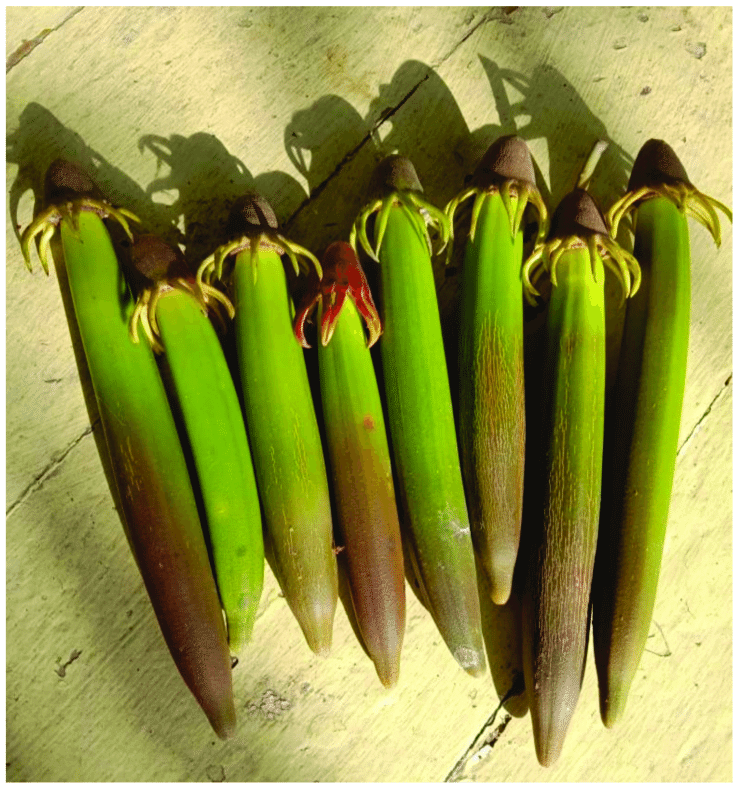
The lindur fruit (Bruguiera gymnorrhiza), also called kewaka, grows on mangrove trees in coastal areas such as Lembata Island, Indonesia. Long and torpedo-shaped, these propagules are rich in starch and can have as many carbohydrates as rice or corn. However, they are unsafe to eat raw because they contain tannins and small amounts of cyanide compounds. Local communities have long known how to make them edible by boiling, soaking, and sometimes fermenting the fruits to remove toxins. Once prepared, they can be dried and ground into flour, providing a nutritious staple food that is also high in antioxidants.
8. Goat’s Horn Mangrove Fruit (Aegiceras corniculatum)
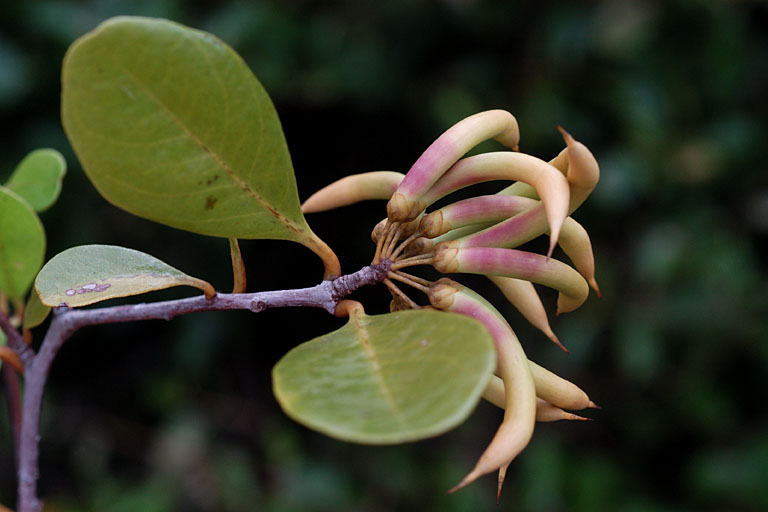
The goat’s horn mangrove (Aegiceras corniculatum) produces small, curved fruits that look like chilies, light green to purple when ripe. Each fruit holds a single seed that often begins to sprout while still on the tree. This mangrove grows along tropical and subtropical coasts across Asia and the Pacific. In traditional medicine, its fruit, leaves, and bark have been used to help treat asthma, arthritis, pain, inflammation, diabetes, and liver problems. Plant extracts are known for their pain-relieving properties and potential benefits for managing diabetes. Though not commonly eaten, it is important for both coastal ecosystems and local healing traditions.
9. Bloodhorn (Ochrosia elliptica)
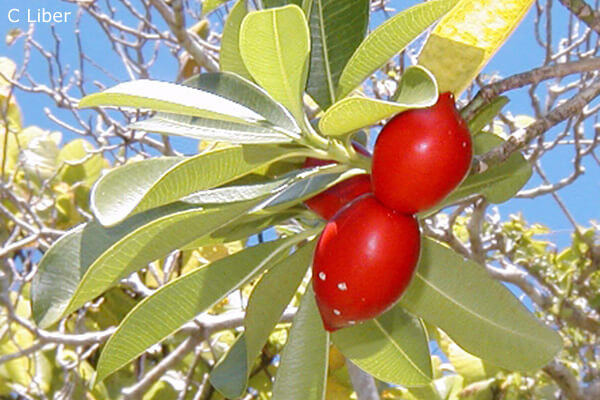
The bloodhorn (Ochrosia elliptica), also called northern ochrosia or scarlet wedge-apple, is a coastal tree native to north-eastern Australia and parts of the southwest Pacific. It grows near beaches, often behind mangroves, and is valued for its bright red, glossy fruits and clusters of cream flowers that bloom year-round. The fruit is poisonous and releases a white milky sap when damaged. Traditionally, parts of the plant have been used in medicine and for making beads. Salt-tolerant and attractive, it is sometimes planted for coastal gardens or beach stabilization, but its toxicity means it should be handled with care around people and pets.
Also Check: 21 Swamp Fruits That Grow in Mud, Marshes, and Flood Zones
